Ricardo Romero’s Giant Fox, Genet, and Badger Sculptures Appear in Alcanena, Portugal
In the centre of Alcanena, Portugal, a town historically defined by its leather tanning industry and its abundance of limestone-infused waters, a monumental public artwork has been unveiled. Titled “Wilderness”, this new installation by Portuguese artist Ricardo Romero draws attention to the ecological loss.
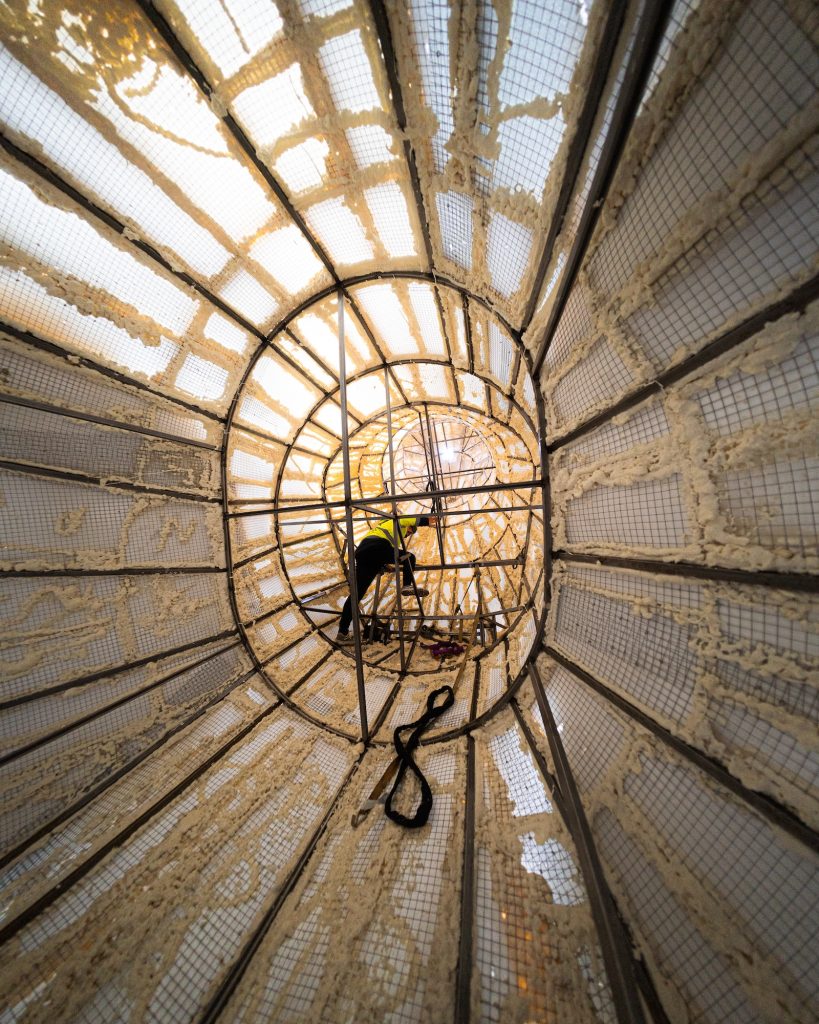
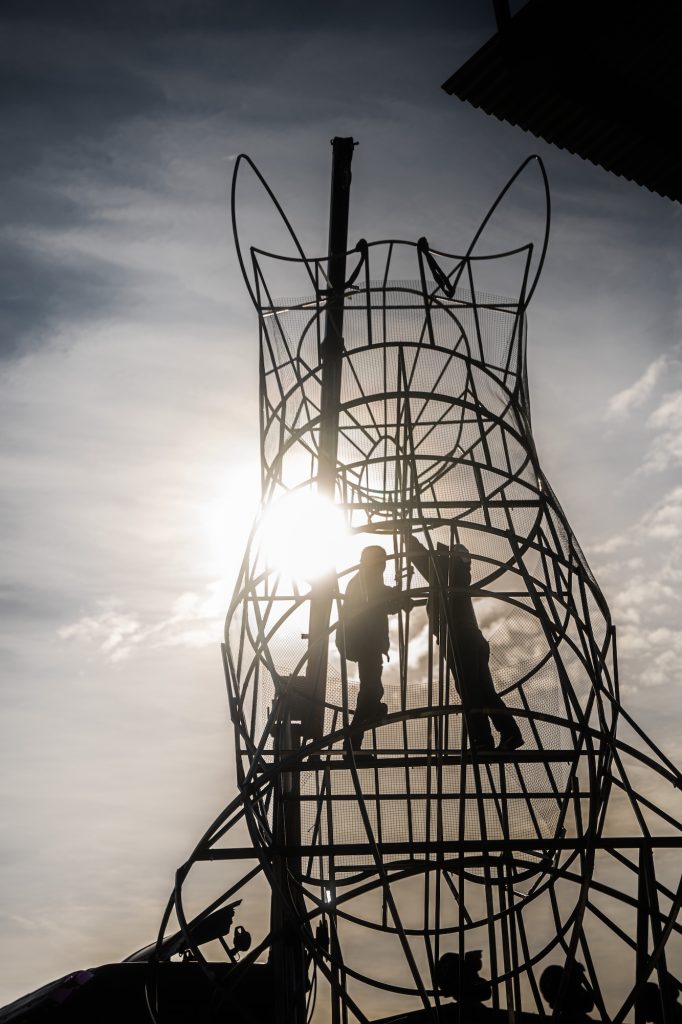
All images courtesy of Ricardo Romero
Tanning Industry and Environmental Change
Alcanena’s tanning industry, once a pillar of economic development, has long depended on the region’s unique water quality. While it brought prosperity, it also introduced significant environmental costs: pollution of local water systems, degradation of nearby habitats, and long-term ecological stress on surrounding landscapes. Over time, this industrial footprint has contributed to the disruption of the area’s biodiversity, including the displacement of native wildlife.
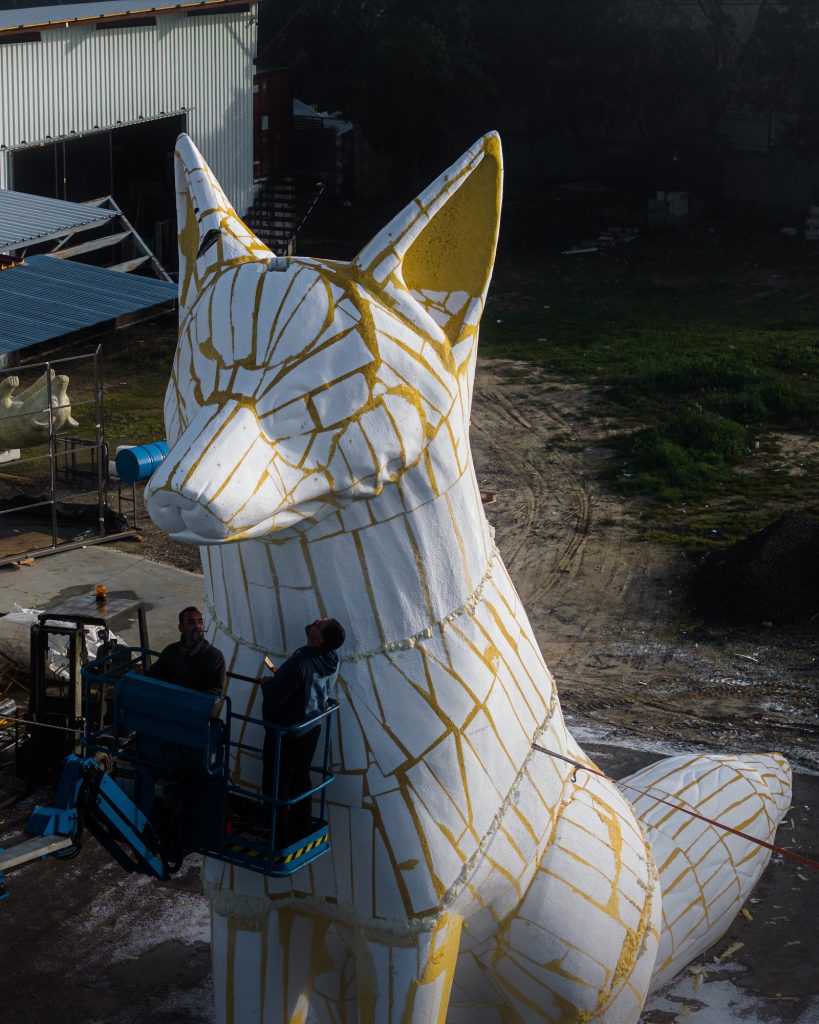
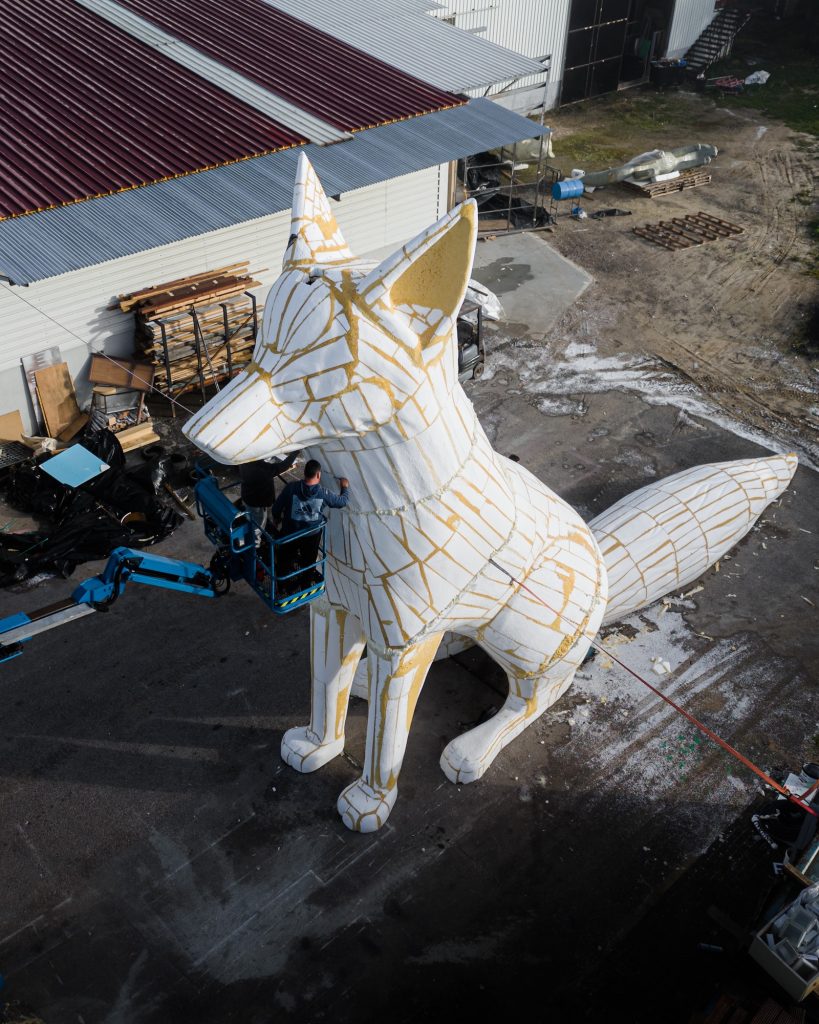
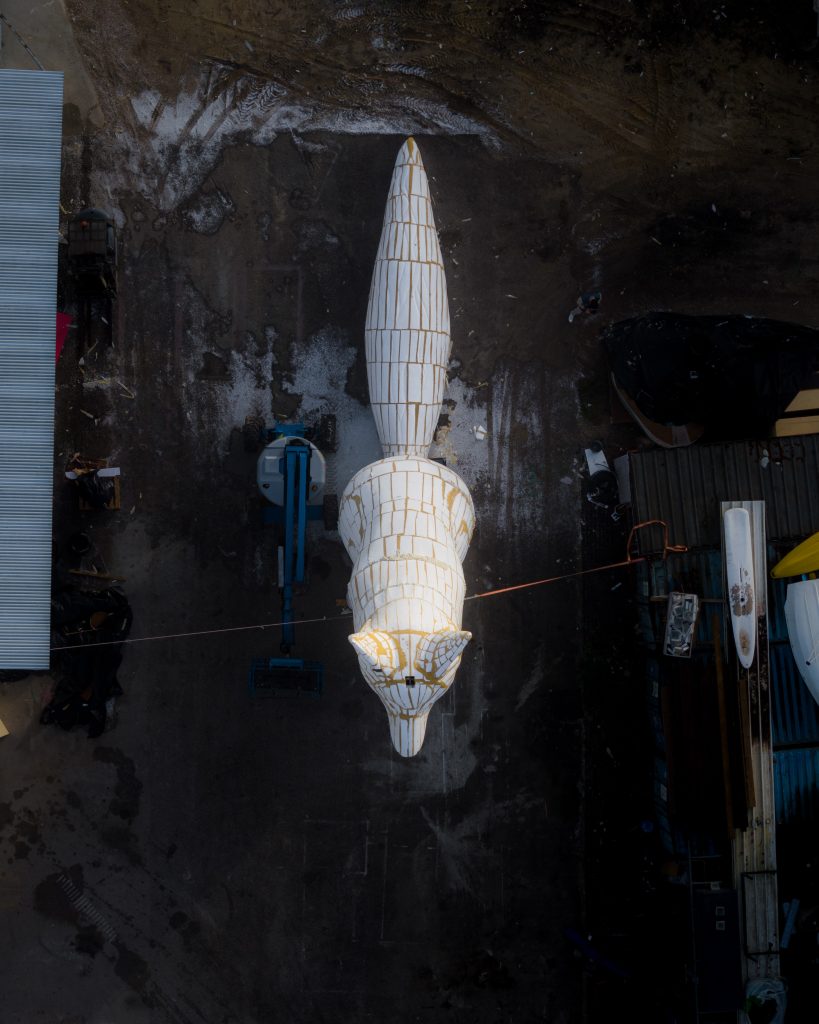
All images courtesy of Ricardo Romero
Romero situates Wilderness at the very heart of this narrative. The work becomes a reflection not just on animals, but on what happens when human progress overrides natural systems. In placing his installation here, he implicates a legacy that is both culturally rich and environmentally complex.
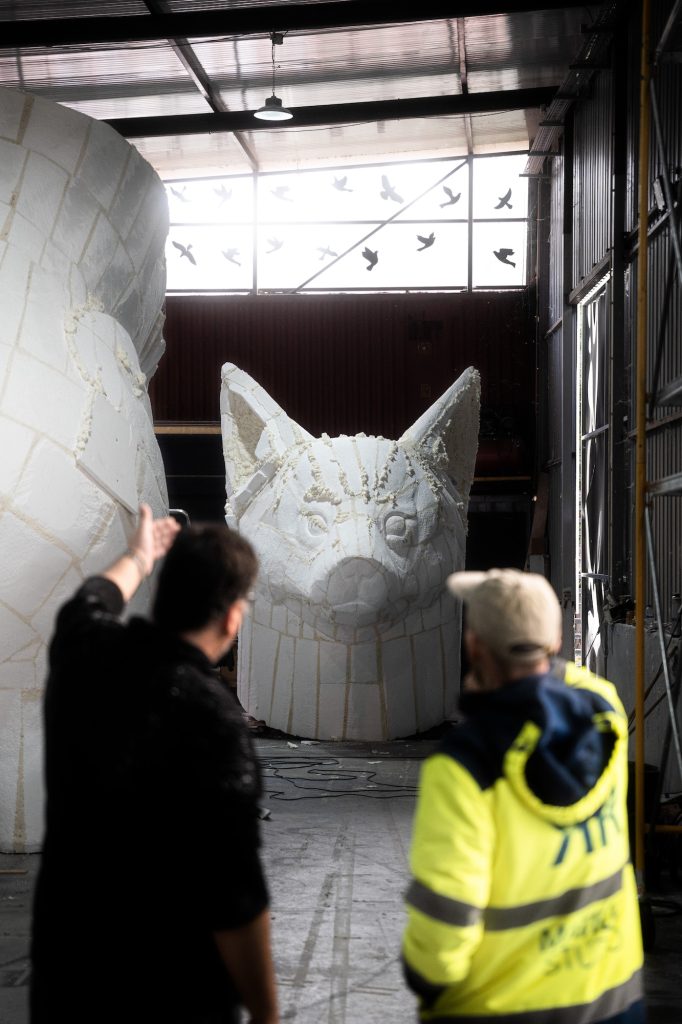
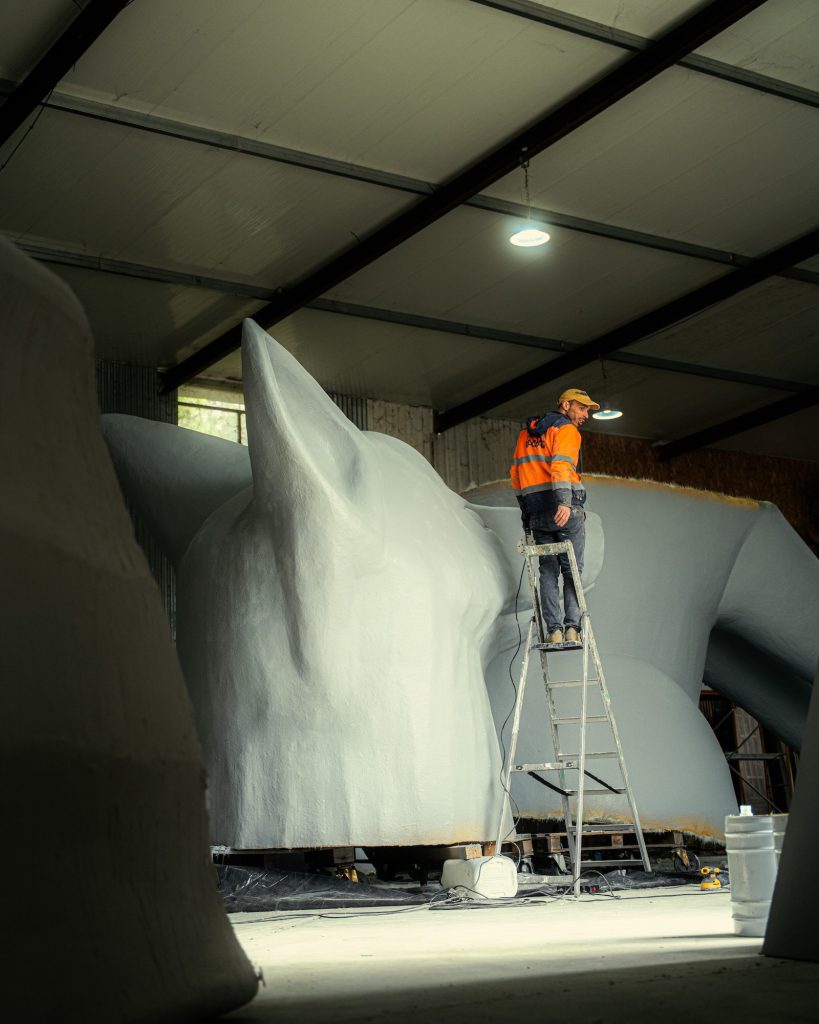
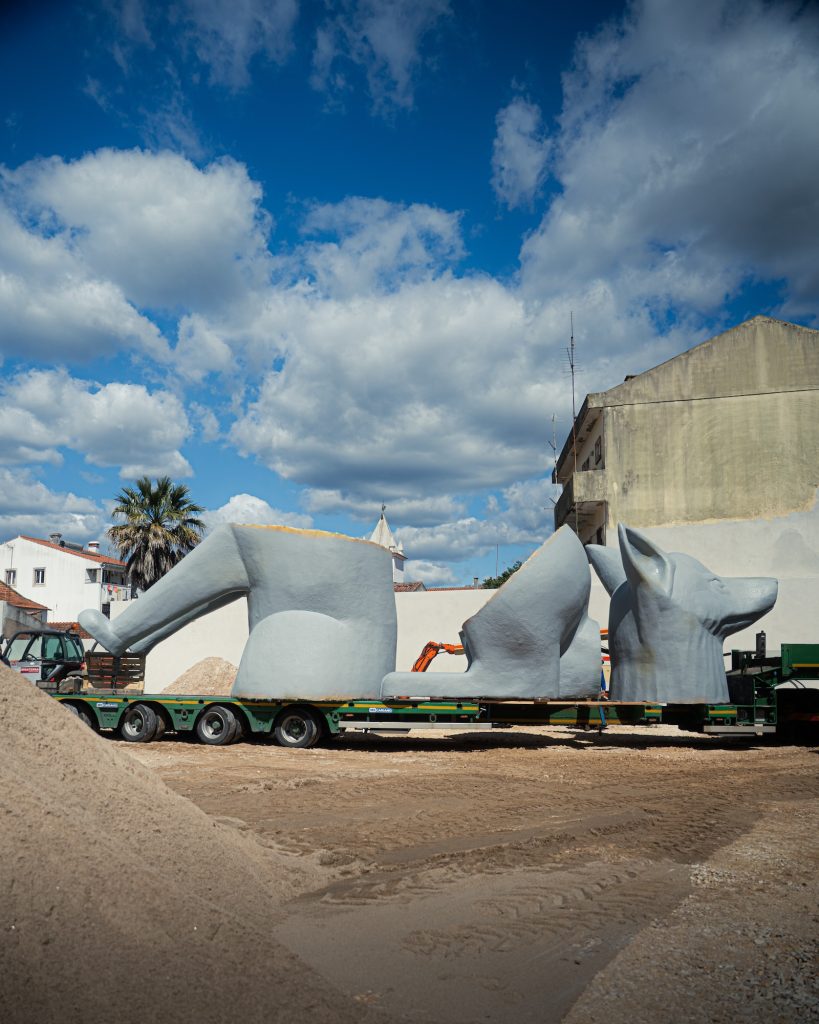
All images courtesy of Ricardo Romero
An Intervention in Scale and Space
The installation features three massive animal sculptures: a fox (9×14×3.5 m), a genet (3.5×4.2×1 m), and a badger(3.5×4×1 m). Rendered in vivid red and integrated into the architecture of a traditional building, they stand out and are intentional impossible to ignore. Their scale, posture, and placement invert the human gaze: these animals aren’t hiding. They confront, they reclaim, and they disturb.
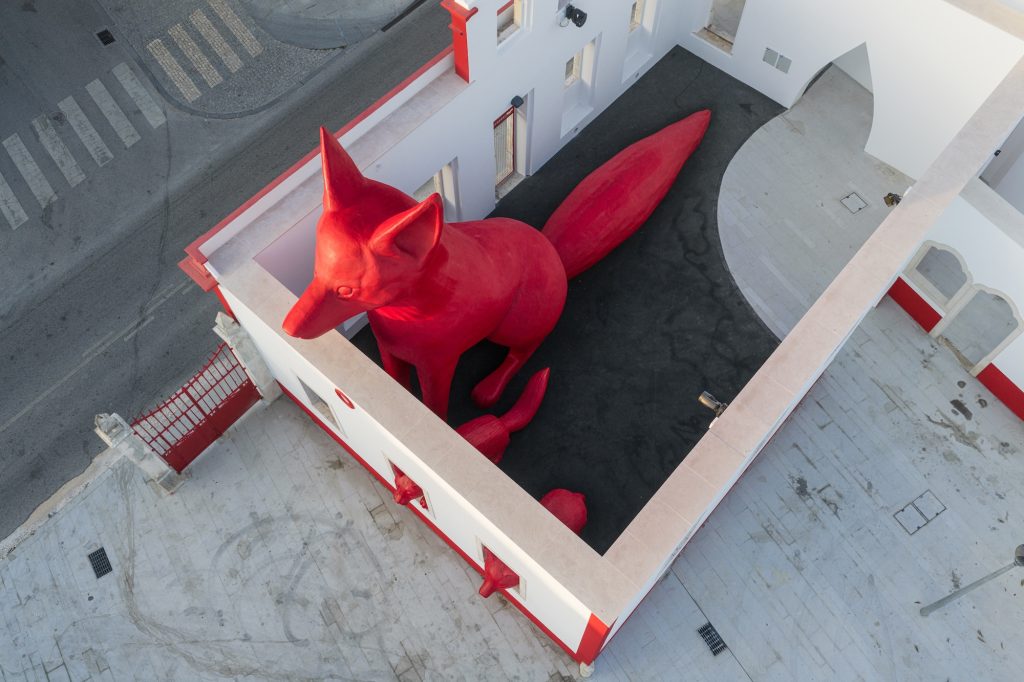
All images courtesy of Ricardo Romero
Each figure represents a species native to this territory. Once integral to the local ecosystem, their populations have declined dramatically. What was common is now rare. What was part of the cycle is now at its edge.
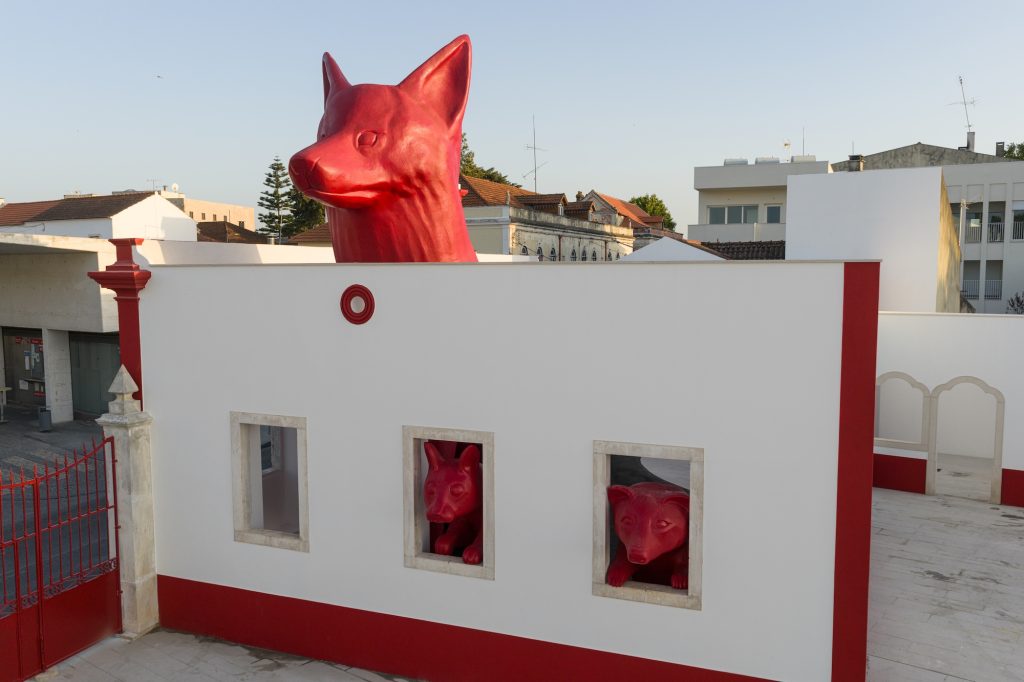
All images courtesy of Ricardo Romero
Reversing the Gaze
Romero manipulates scale as a conceptual tool, transforming these often-overlooked animals into commanding presences. The enlarged forms are deliberately out of proportion, challenging viewers to confront the reality of what has been made invisible. The fox, in particular, dominates the space — its head rising above courtyard walls, its stance calm but undeniable. These animals no longer crouch in undergrowth or retreat from human activity. Instead, they confront the viewer directly, reclaiming space.
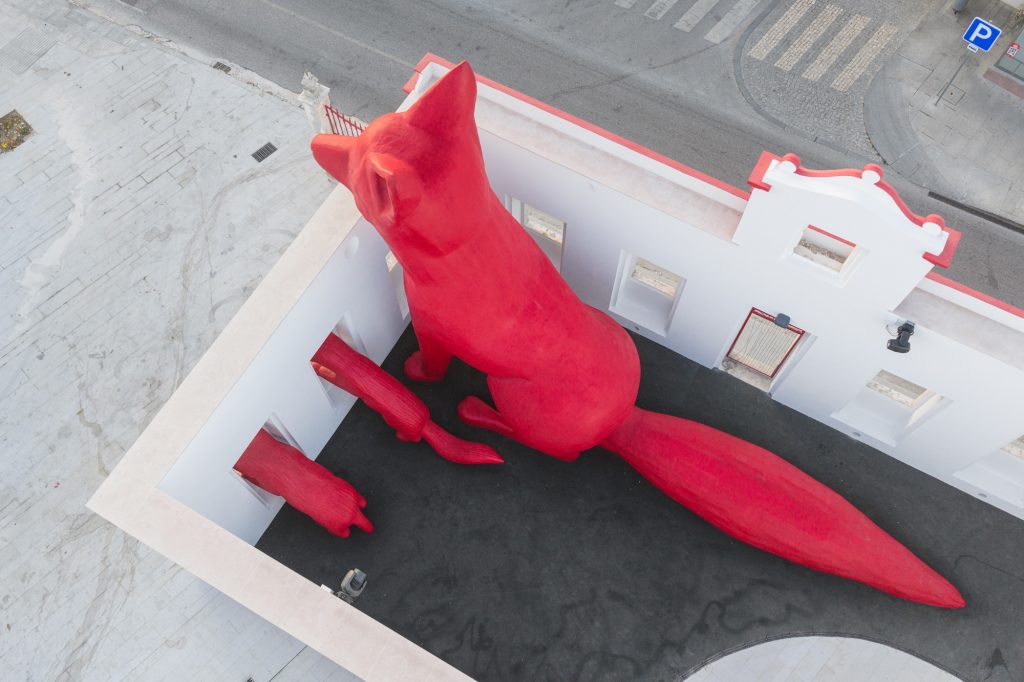
All images courtesy of Ricardo Romero
By amplifying their presence, Romero repositions these creatures as symbols of environmental urgency, rather than relics of a pastoral past.
A Sculptural Warning
Wilderness is not a tribute to what’s been lost, but a warning about what is still at risk. The installation doesn’t mourn—it alerts. Through material, color, and scale, Romero demands a reconsideration of the human-nature relationship. His work insists that the disappearance of these species is not an isolated event, but a symptom of a larger imbalance — one that ultimately implicates us all.
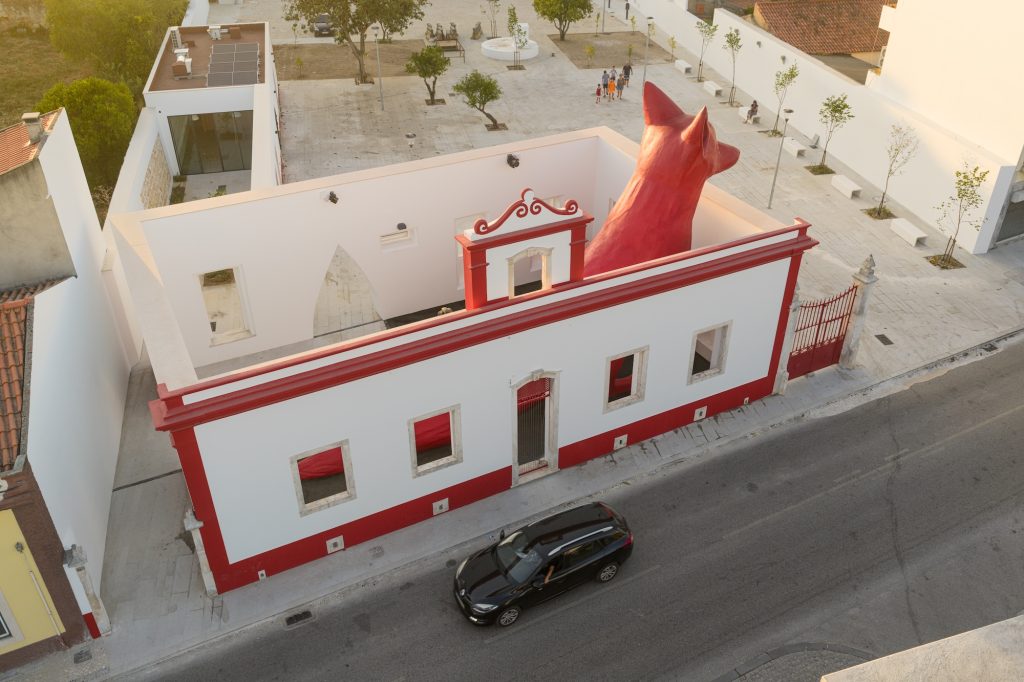
All images courtesy of Ricardo Romero
Rather than placing nature in the background, Wilderness brings it forcefully into the foreground. By situating Wilderness in Alcanena, Ricardo Romero fuses material, message, and location into a powerful whole.
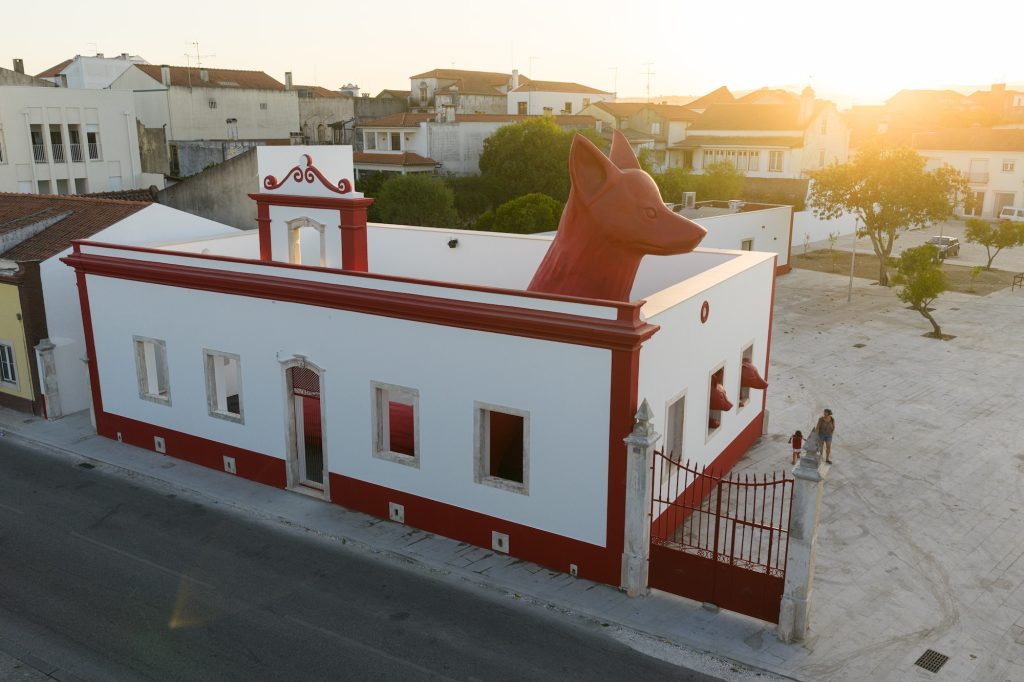
All images courtesy of Ricardo Romero
This incredible installation responds directly to the region’s industrial past, offering a space for reflection on the cost of progress and the fragile state of biodiversity.
“In a land known for the strength of its tanning industry — shaped by the generosity of its limestone-rich waters — a pressing reflection now arises on the fragile ecosystems that human action has long been shaping and, all too often, destabilising.
In this pictorial representation, three figures emerge: the badger, the genet, and the fox. Animals that still inhabit this territory, though in ever-dwindling numbers. Once common, coexisting with the landscape and its natural cycles, they have become silent symbols of a threatened nature, pressured by transformations imposed in the name of progress.
The artwork invites the viewer to reflect on a lost balance. Through scale — manipulated as the central element of this dialogue — the artist challenges the gaze and the body of the visitor, urging a repositioning in relation to what has long been rendered invisible.
More than a nostalgic evocation, this piece is a warning: what we do to the natural world, we ultimately do to ourselves. Acknowledging the fragility of these ecosystems is the first step toward imagining a future in which the human gesture once again integrates, rather than excludes, what is essential.” Ricardo Romero
The fox, genet, and badger now stand tall asking a simple but urgent question that the artist asks: what kind of world are we leaving behind?
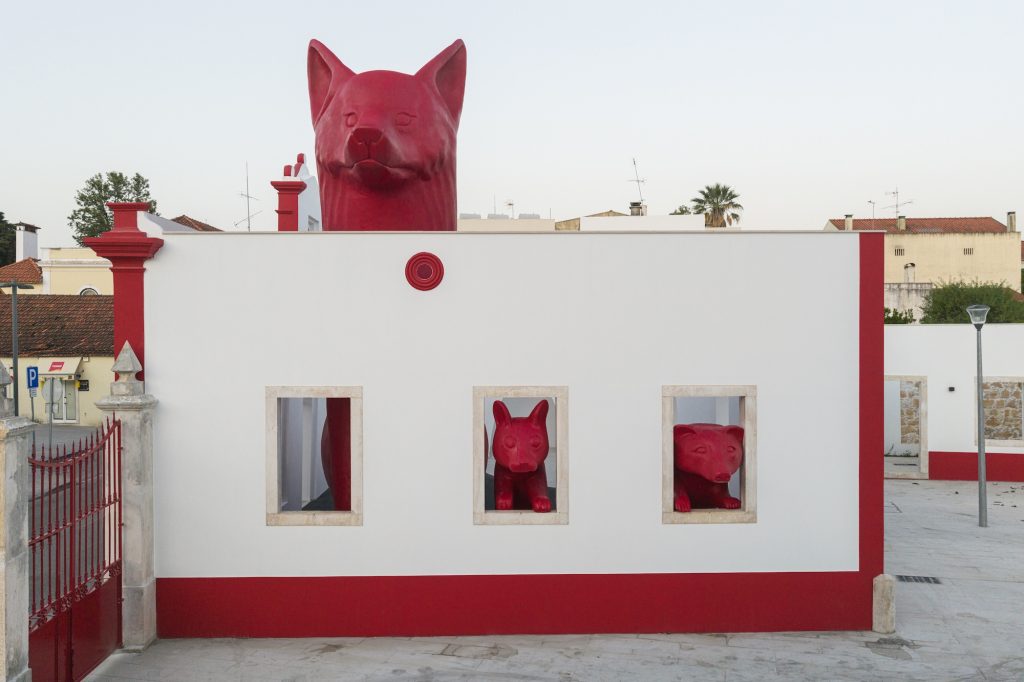
All images courtesy of Ricardo Romero
Image Credit: All images courtesy of Ricardo Romero. Photography by Paulo Constantino (@pessante)